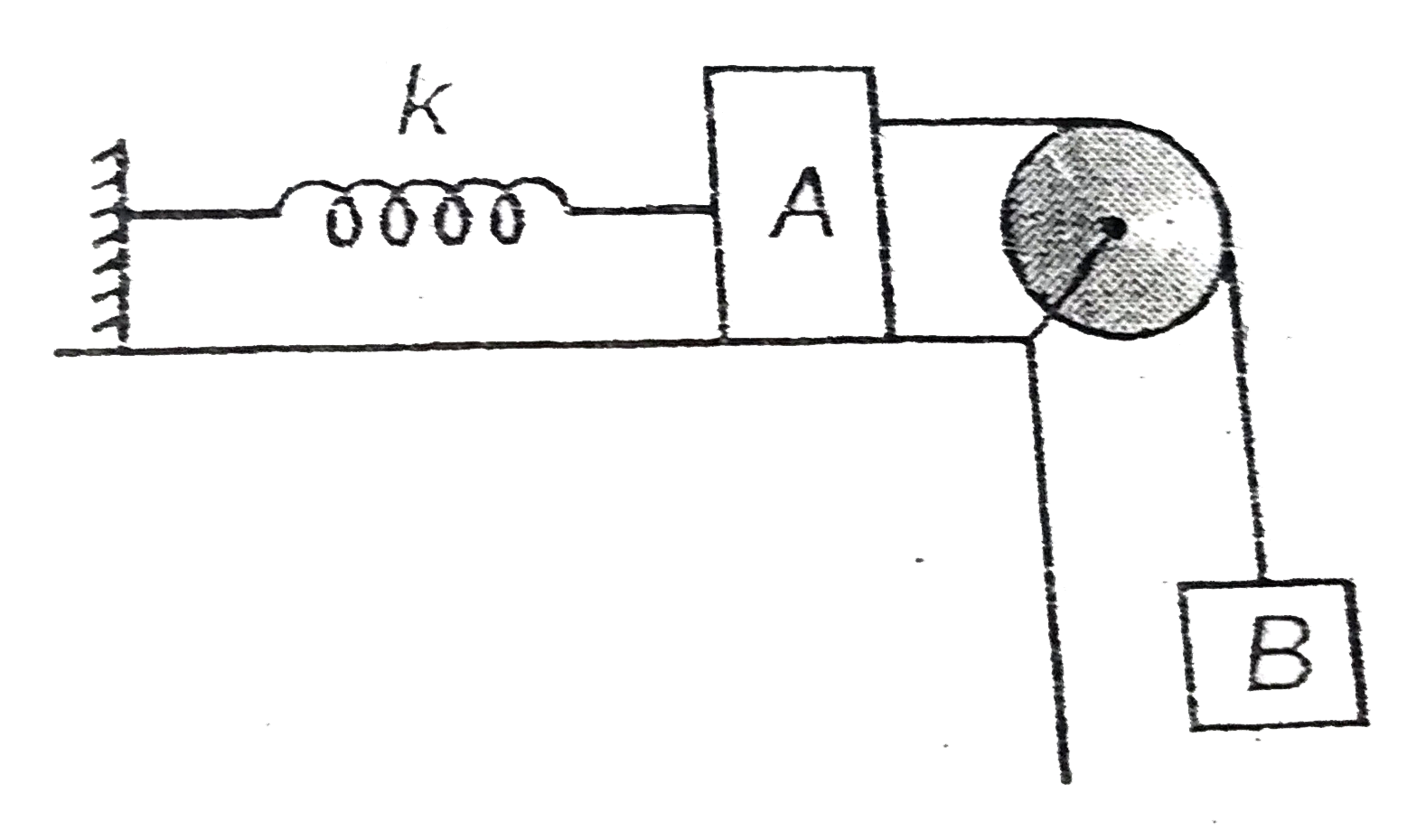If extension in the spring at equilibrium position is 6 cm then acceleration of block if it is released by further stretching 4 cm. 
4mS2
1mS2
6mS2
2mS2
Step by step video & image solution for If extension in the spring at equilibrium position is 6 cm then acceleration of block if it is released by further stretching 4 cm. by Physics experts to help you in doubts & scoring excellent marks in Class 12 exams.
Updated on:21/07/2023Similar Questions
A block of mass m is suddenly released from the top of a spring of stiffness constant k.

a. Find the acceleration of block just after release.
b. What is the compression in the spring at equilibrium.
c. What is the maximum compression in the spring.
d. Find the acceleration of block at maximum compression in the spring.
View SolutionConsider the situation shown in figure.

Mass of block A is m and that of blcok B is 2m. The force constant of string is k. Friction is absent everywhere. System is released from rest with the spring unstretched. Find
(a) The maximum extension of the spring xm
(b) The speed of block A when the extension in the springt is x=xm2
(c ) The net acceleration of block B when extension in the spring is x=xm4.
View Solution
Knowledge Check
A block tied between two identical springs is in equilibrium. If upper spring is cut then the acceleration of the block just after cut is 6m/s2 downwards. Now, if instead of upper spring, lower spring is being cut then the acceleration of the block just after the cut will be.
 A4m/s2 downwardsB6m/s2 downwardsC4m/s2 upwardsD6m/s2 upwards
A4m/s2 downwardsB6m/s2 downwardsC4m/s2 upwardsD6m/s2 upwardsThe given arrangement is released from rest when spring is in natural length. Maximum extension in spring during the motion is x0.a1,a2 and a3 are accelerations of the blocks. Make the correct options
_PHY_E01_005_Q01.png) Aa2−a1=a1−a3Bx0=4mg3kCVelocity of 2m connected to spring when elongation is x02 is v=x02√3k14mDacceleration a1 at x04 is 3kx042m
Aa2−a1=a1−a3Bx0=4mg3kCVelocity of 2m connected to spring when elongation is x02 is v=x02√3k14mDacceleration a1 at x04 is 3kx042mThe acceleration of a particle executing SHM at a distance of 3 cm from equilibrium position is 5cm/s2. Its acceleration at a distance of 2 cm from equilibrium position is
A10/3cm/s2B10cm/s2C7.5cm/s2D4.5cm/s2
A rectangular tank having base 15cm×20cm is filled with water (density ρ=1000kg/m2) up to 20cm and force constant K=280N/m is fixed to the bottom of the tank so that the spring remains vertical.
This system is in an elevator moving downwards with acceleration a=2m/s2. A cubical block of side l=10cm and mass m=2kg is gently placed over the spring and released gradually, as shown in the figure.

a. Calculate compression of the spring in equilibrium position.
b. If the block is slightly pushed down from equilibrium position and released, calculate frequency of its vertical oscillations.
View SolutionA block of mass m is released from rest onto a spring. A having stiffness kA=mg/2h as shown in figure. If the block compresses spring B through a distance h, find the:

a. stiffness of the spring B
b. equilibrium position of the block
c. maximum velocity of the block
d. maximum acceleration of the block
View Solution
A 5-kg block rests on a smooth inclined plane of inclination 37∘ as shown in the diagram if the extension of spring is 6cm, find (a) the spring constant (b). If the block is pulled dow the incline 4 cm from its equilibrium position and released, find the initial acceleration of the block.
View SolutionOn suspending a heavy block of 2 kg from a massless spring, an extension of 5 cm is produced in the spring. If the block is further pulled down by 10 cm and then released then find the kinetic energy of oscillation of the spring.
View SolutionThe system is released from rest with both the springs in unstretched positions. Mass of each block is 1 kg and force constant of each spring is 10 N/m. Extension of horizontal spring in equilibrium is:

View Solution
